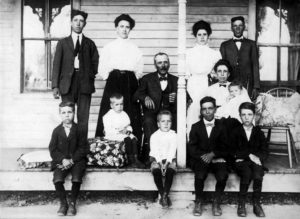
The childhood of my great-grandfather, Joseph Voisin (1855-1916), remained a stubborn mystery after many years of genealogy research. In other essays I described the known facts and many hypotheses. I explored genetic genealogy and used DNA testing to identify numerous distant cousins. However the lack of traditional genealogical evidence like birth, marriage, and census records did not shed light on Joseph’s birth or who his parents were.
Until now. While analyzing my DNA test results, I noticed several distant matches who did not fit my known family tree. I had to determine their lineages based on scant information. Next I found matches we shared in common and I determined their lineages too. I began to identify more and more distant cousins who descend from one man, Theobald Koebel.1

- Archives Départementles du Bas-Rhin (https://archives.bas-rhin.fr/) Oberseebach – Etat civil – Registre de naissances 1830 – 4 E 351/3, Catherine Koebel, # 1663, Image 18 of 23, (https://archives.bas-rhin.fr/detail-document/ETAT-CIVIL-C595-P1-R208956#visio/page:ETAT-CIVIL-C595-P1-R208956-2284439 : downloaded 25 May 2023). Signature of Theobald Koebel from his daughter Catherine’s birth record.

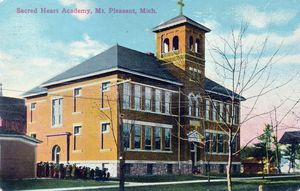
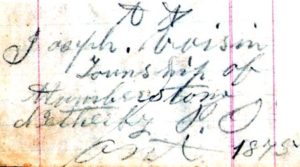

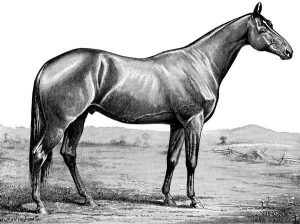



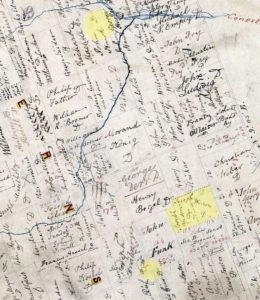
 I would like to take this opportunity to recognize Magdalena Voisin. She helped me find Joseph and Anne Voisin, who were my ancestors, and quite possibly my great great-grandparents. She provided such a big clue for a little girl only eleven years old. You see, she was born about 1841.
I would like to take this opportunity to recognize Magdalena Voisin. She helped me find Joseph and Anne Voisin, who were my ancestors, and quite possibly my great great-grandparents. She provided such a big clue for a little girl only eleven years old. You see, she was born about 1841.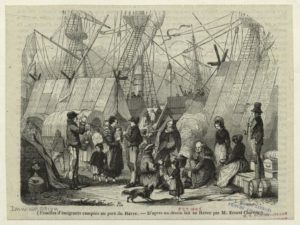
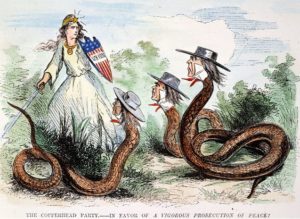


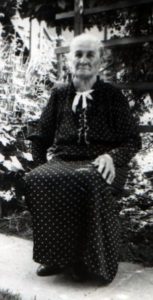

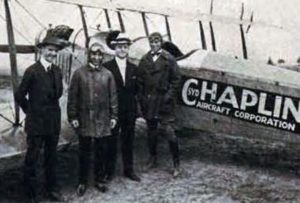 My great-granduncle John Yuncker was a piano sales manager in Los Angeles during the early 20th century. Here he participated in aviation history by taking one of the first-ever commercial passenger trips on August 30, 1919. As I describe in a
My great-granduncle John Yuncker was a piano sales manager in Los Angeles during the early 20th century. Here he participated in aviation history by taking one of the first-ever commercial passenger trips on August 30, 1919. As I describe in a 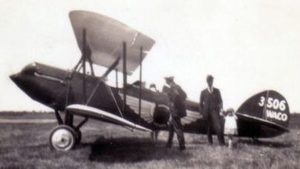 This is my grandfather Ernie Voisin standing with his daughter, my aunt Nora May as a little girl. This was taken at Houghton Lake, Michigan on July 4, 1927.
This is my grandfather Ernie Voisin standing with his daughter, my aunt Nora May as a little girl. This was taken at Houghton Lake, Michigan on July 4, 1927. My granduncle George Voisin was my grandfather’s younger brother. He apparently owned a Ford Model-T Coupe, which is pictured in a few old family photographs from the mid- to late-1920s.
My granduncle George Voisin was my grandfather’s younger brother. He apparently owned a Ford Model-T Coupe, which is pictured in a few old family photographs from the mid- to late-1920s.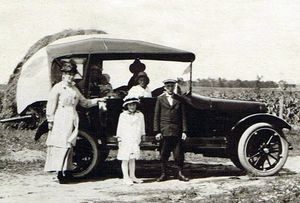 It was an automobile I had not heard about until I saw this old family photo. This is a snapshot of a 1917 Dort owned by my great-grandparents, Lorenz and Louisa Rademacher, who lived in rural Isabella County, Michigan.
It was an automobile I had not heard about until I saw this old family photo. This is a snapshot of a 1917 Dort owned by my great-grandparents, Lorenz and Louisa Rademacher, who lived in rural Isabella County, Michigan.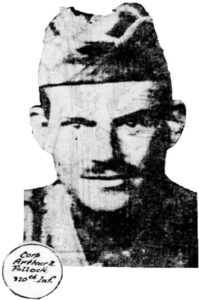
 There once was a precious little girl named Violet who died at age 2. More than one hundred years later, it is she who helped me unravel a compelling mystery.
There once was a precious little girl named Violet who died at age 2. More than one hundred years later, it is she who helped me unravel a compelling mystery.